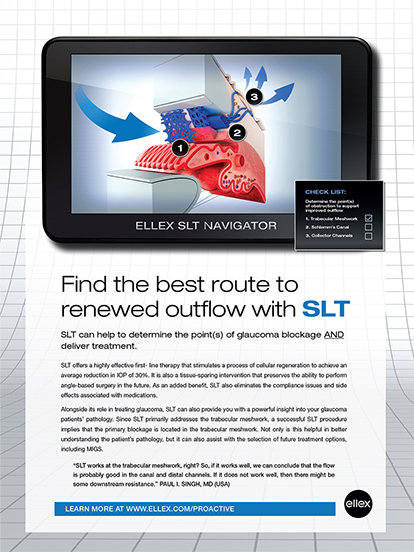Do you need diagnostic platforms with all the bells and whistles to be able to diagnose and treat ocular surface disease (OSD)? Of course not. If you use a few dyes, a sterile tipped applicator, and your slit lamp, you can begin to diagnose and treat OSD, including dry eye disease (DED).
That said, technology makes our jobs easier and our diagnoses more accurate. I have developed confidence in some platforms and have come to rely on several tests that I just couldn’t, in my opinion, practice effectively without.
OSMOLARITY TESTING
The TearLab Osmolarity System (TearLab) has become a staple in my practice. The Osmolarity System is a point-of-care test that was granted a Clinical Laboratory Improvement Amendments (CLIA) certificate of waiver, meaning that data from the test can be evaluated in the clinic and do not have to be sent to a laboratory for testing. Osmolarity testing helps me confirm the presence of DED in a patient and helps me monitor that patient’s condition during therapy.
Some patients with DED symptoms have low osmolarity test scores. In these patients, I consider other diagnoses such as anterior basement membrane dystrophy or conjunctivochalasis.
Patients respond well to metrics. Explaining the results of a test to a patient sometimes encourages the patient to initiate or continue treatment. The Osmolarity System is one of many platforms with easy-to-interpret data that can help to educate patients on the state of their disease.
MEIBOGRAPHY
Meibography, or imaging of the meibomian glands, has become an indispensable part of my practice for evaluating patients with OSD. Although it is not billable to insurance as a point-of-care test, it can be billed if you obtain an advance beneficiary notice from the patient. Meibography requires no CLIA certificate and can be performed easily in the clinic. I include it at no charge as part of my DED evaluation.
Meibography used to be a cumbersome procedure performed at the slit lamp, requiring lid eversion and a specialized camera. Now there are at least three devices available that can be easily and noninvasively used: the LipiScan (Johnson & Johnson Vision), the Keratograph 5M (Oculus), and the HD Analyzer (Visiometrics).
Meibography allows me to look for meibomian gland atrophy. Just as you can use osmolarity testing as a tool to educate patients, you can show patients their meibography results to educate them on the realities of meibomian gland obstruction.
After I review these imaging results with patients, many select a more aggressive treatment than they might have otherwise chosen—for example, electing to have a procedure in addition to taking the therapeutic pharmaceutical agents and supplements that I have recommended. From a business sense, then, even free meibography can lead to increased revenue for a clinic if the time is taken to educate patients on the platform’s findings.






